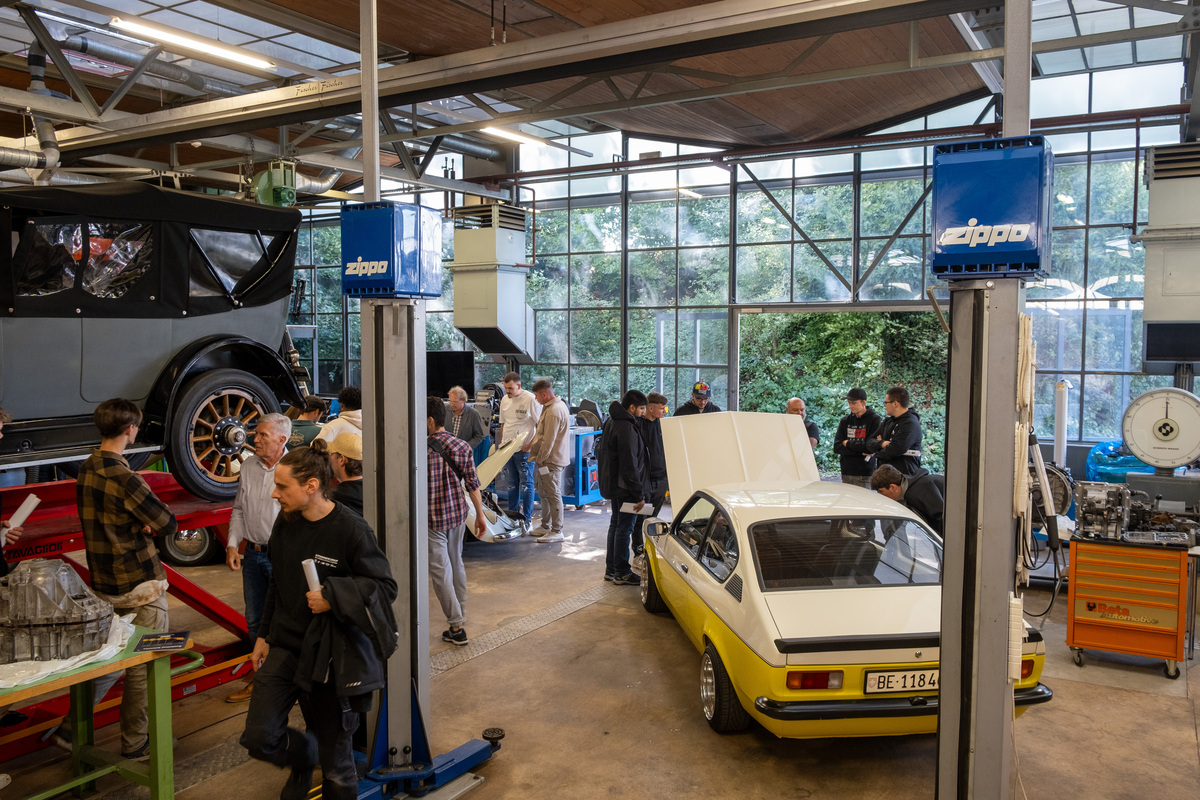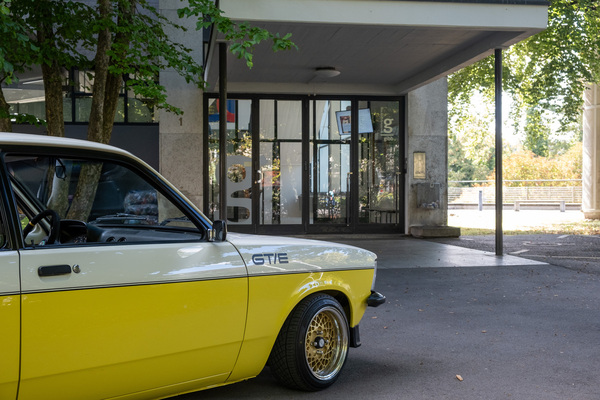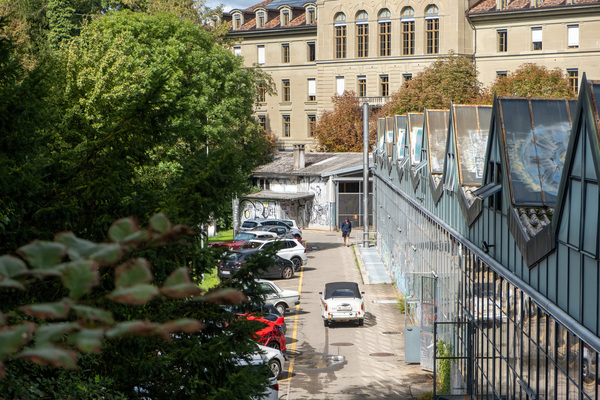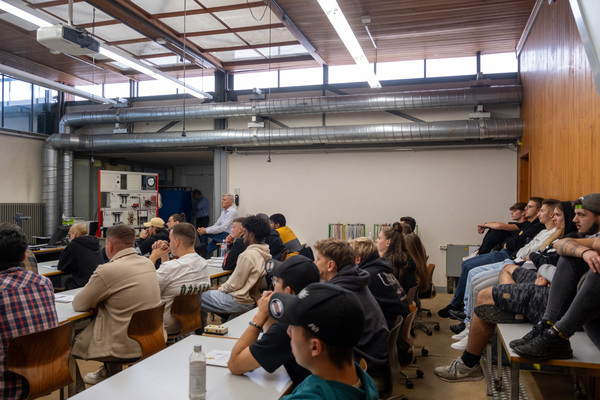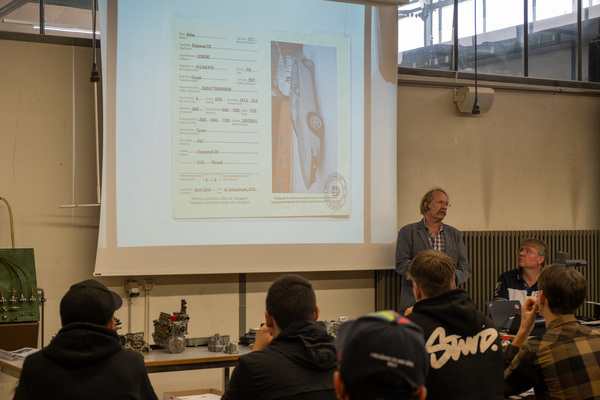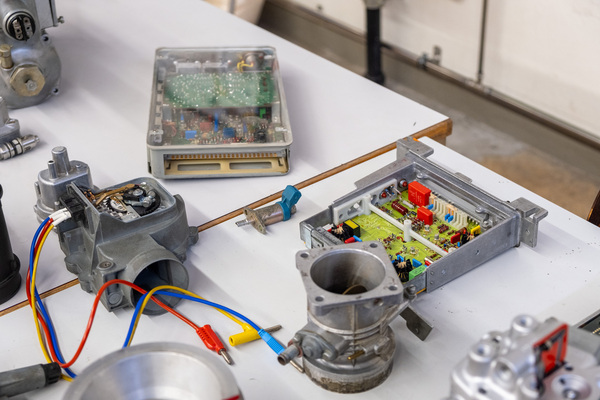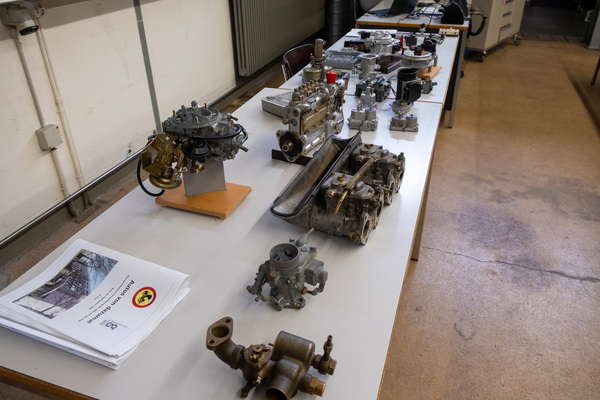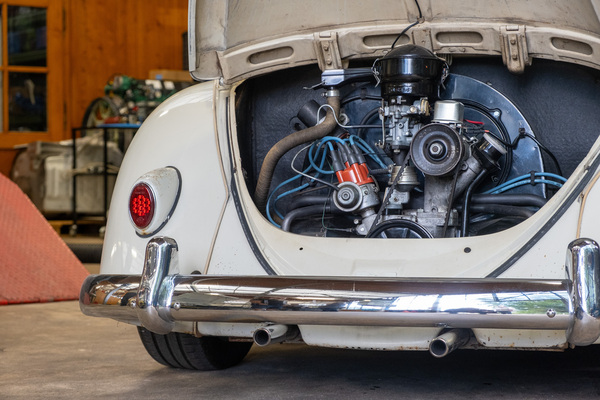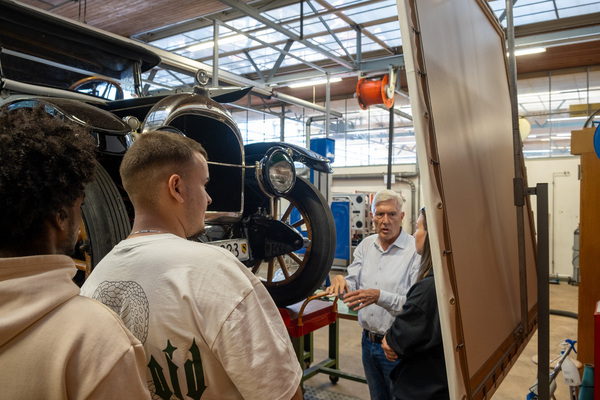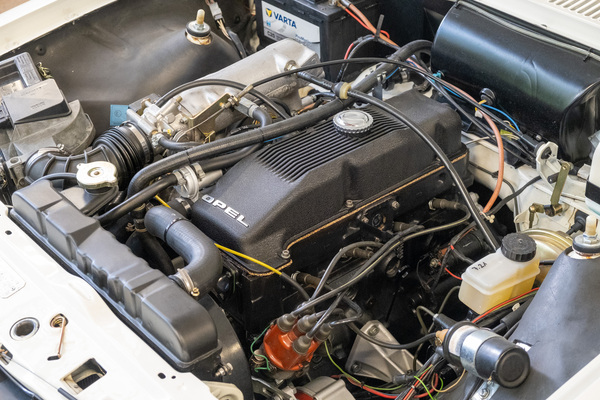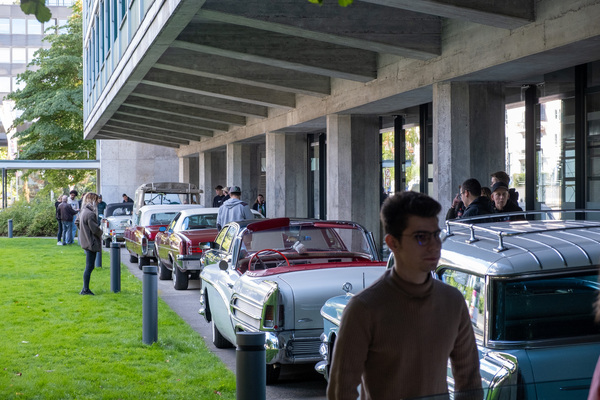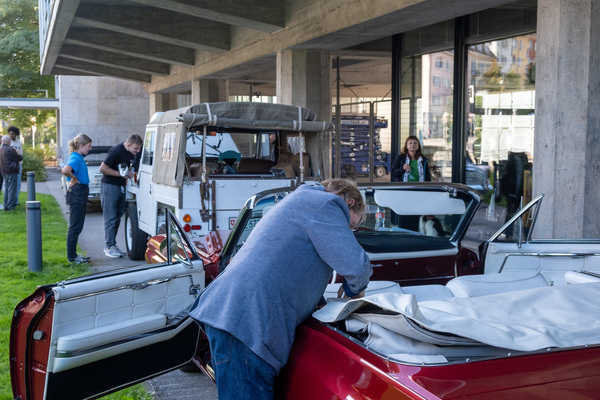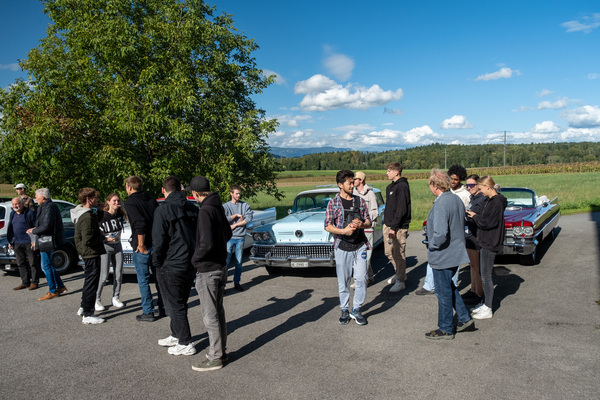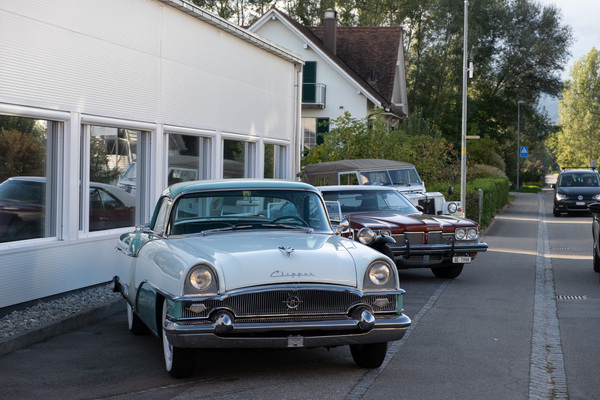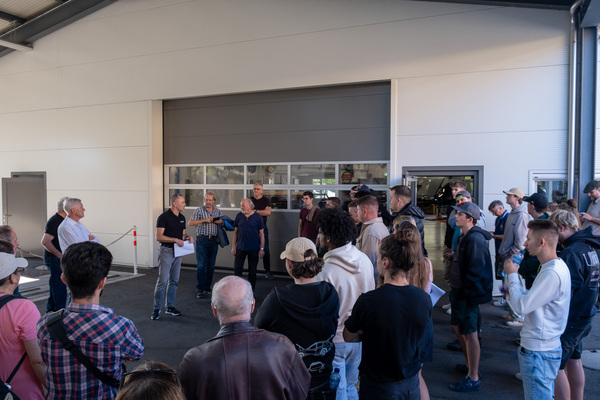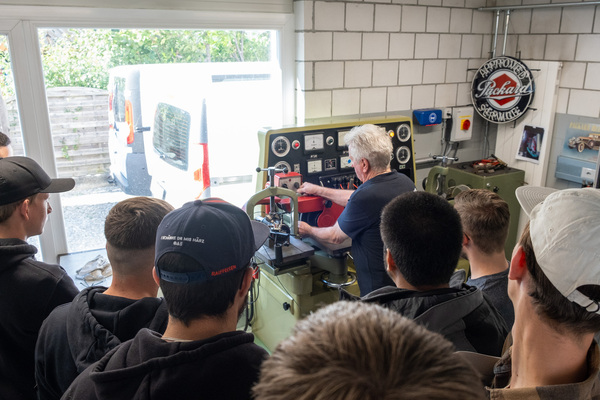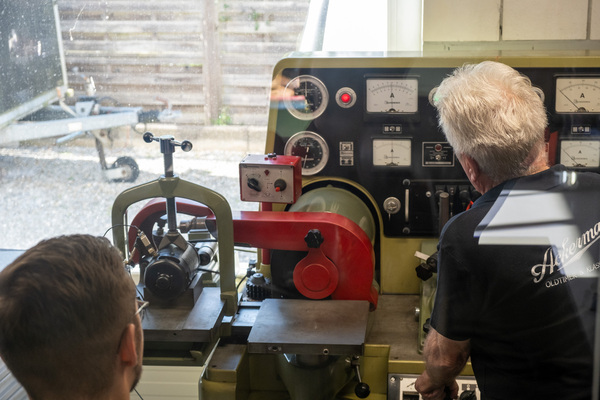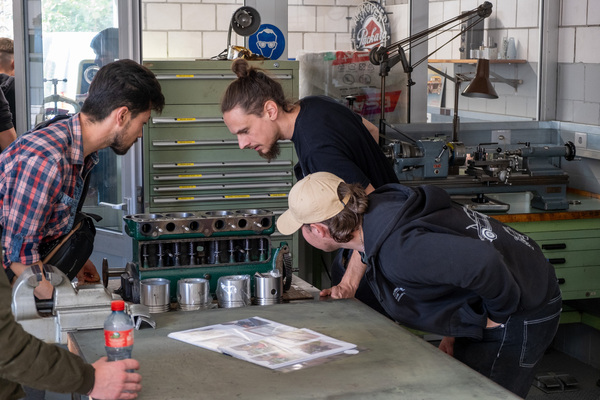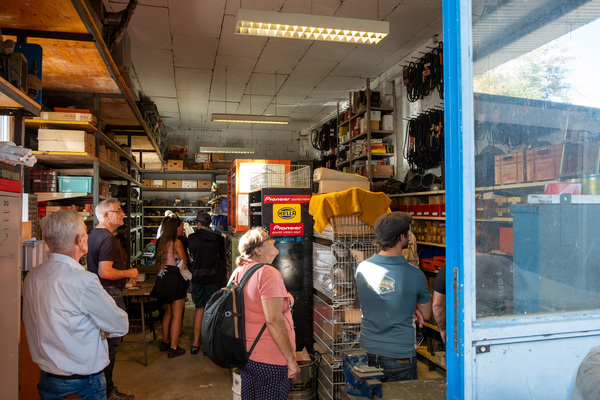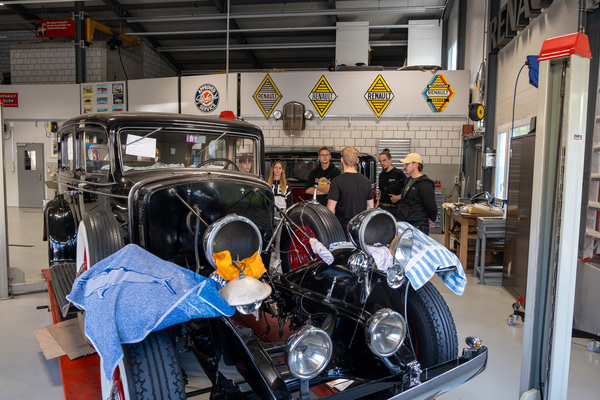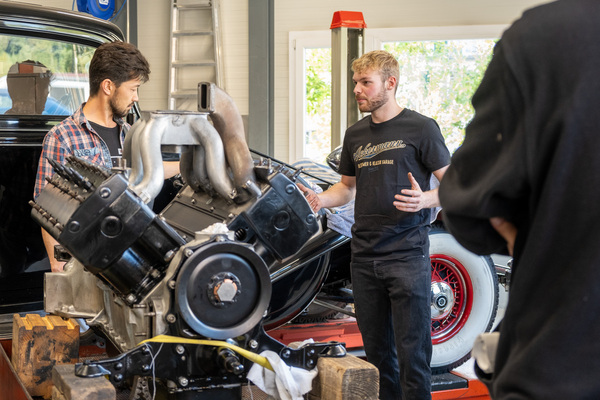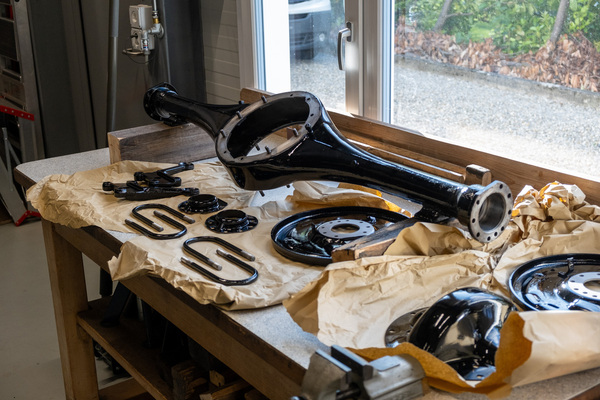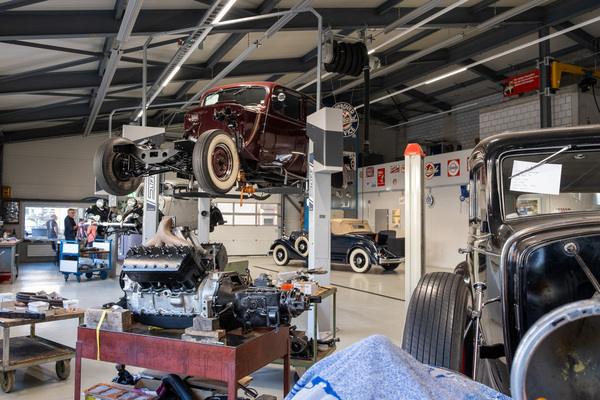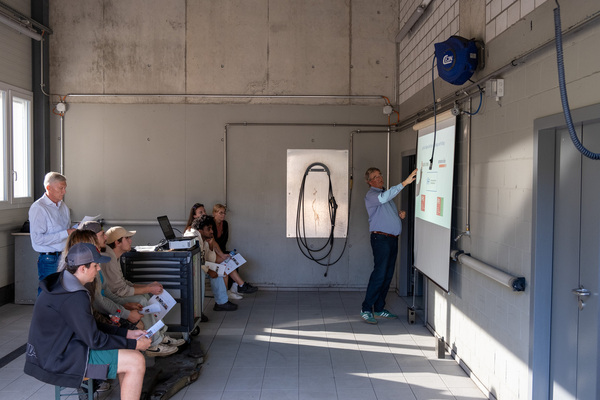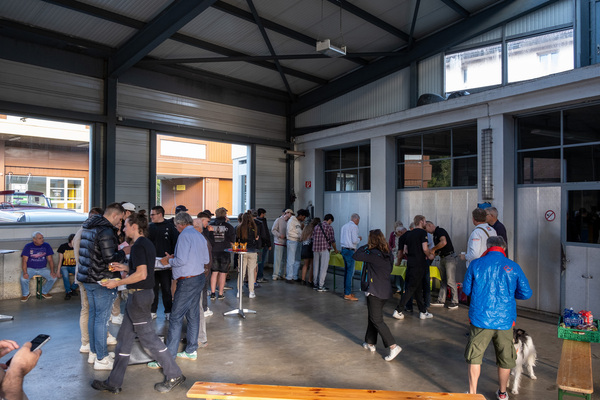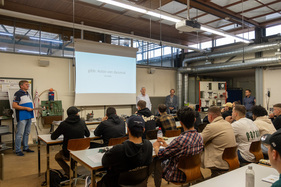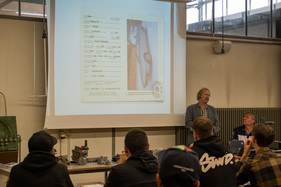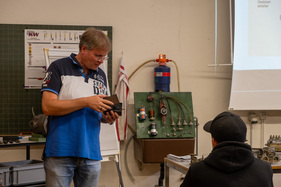It is well known that the automotive industry is currently undergoing radical change. Classic car owners are also directly affected by technical change. In times of increasingly electrified road traffic, carburetors and ignition distributors are long gone and have disappeared from current textbooks - there is a looming knowledge gap in the maintenance and operation of classic vehicles. Of course, it doesn't help that many experienced specialists will be retiring in the next few years.

Great interest
35 apprentices from all areas of the automotive industry attended the event and filled the theory room of the gibb workshop to capacity right on time for the start of the course at 1 pm. The trainees from the passenger and commercial vehicle sectors included everything from budding automotive mechatronics engineers to body painters and vehicle mechanics.

At the beginning, OCB President Kurt Laederach introduced the OCB members present and the association. The participants then learned from the OCB's technical expert, Olaf Tamm, what actually counts as a classic car and were given an overview of the FIVA passport.
The topics discussed included the influence of retrofits as well as the changing relationship to road traffic regulations. According to Tamm, one example of this is the additional installation of daytime running lights on Toyota MR2s. Due to the retractable headlights, many MR2 owners had fitted additional spotlights for the daytime running lights. Although the installation is understandable, it changes the historic appearance of the vehicle and thus has a direct impact on the FIVA passport.
Sparking questions
After this brief introduction, the participants were divided into two groups. While one group was given a two-part theory block on mixture preparation and the ignition system - key aspects that were fundamentally different in the early days of the automobile than in modern vehicles - the other group had the opportunity to explore historic automotive technology directly on three veteran vehicles in the adjoining hall: an Opel Kadett C, a VW 1200 and a Willys-Knight 88-4.

After a brief presentation of the vehicles, the three owners present, all volunteers, were available to answer questions from the apprentices, including Thomas Schwab, who had brought his Opel Kadett C with him. When one of the trainees asked what the most common known error codes were on the Kadett C, Schwab initially reacted with slight irritation, but after a moment's thought he replied humorously: "You'll look in vain for an OBD plug on this car."
He then went into the engine technology of the Kadett C and explained the differences between earlier electronics in cars and modern technology. In the theory block on mixture preparation, the participants then learned even more about the electronically controlled injection system installed in the Kadett C.
Young and old on the road
After the theory, a special drive awaited the trainees. Around ten members of the OCB had lined up their classic cars in front of the gibb - a colorful mix consisting of vehicles from a wide range of manufacturers and eras.

The participants were spoiled for choice. Rustic in a Land Rover Lightweight or dignified in a Jaguar; in the mild summer weather, a seat in one of the American convertibles was of course also recommended. In the end, everyone found a seat, and halfway along the route the seats were swapped again.
The drive allowed the participants to gain an impression of the driving dynamics of a father car. When the visibly impressed participants reached their destination, Garage Ackermann in Dotzingen, they had a lively discussion with their comrades about the driving performance of the various vehicles.
Insights into the practice
After the drive, an impressive insight into the practice of professional classic car restoration awaited the participants. The volunteer drivers of the convoy also took the opportunity to see theory in practice. Four presentations introduced various areas of classic car restoration. In the area relating to the revision of historic vehicle parts, Marcel Ackermann showed the participants an ignition distributor test bench in action. Under the roaring noise of the test bench, he pointed out the moment of misfiring caused by a defective solenoid.

Rubin also explained the significant differences in the quality of remanufactured parts and therefore emphasized the importance of preferring NOS (New Old Stock) parts, i.e. original new parts from old stocks.
First-hand information
Future vehicle restorer Remo Gsponer showed what it looks like when all the parts are available and the restoration process is already in full swing. Gsponer is currently completing an internship at Garage Ackermann.

After completing this course, he will begin training as a vehicle restorer with a federal certificate. Gsponer reported on the extensive work on the underbody and chassis conservation of a Packard Super 8 and the forthcoming reassembly of a 1931 Buick and presented the removed, freshly overhauled drive unit of the Cadillac right next to it.
Maintaining specialist knowledge
How and where the apprentices can acquire the specialist knowledge for such extensive work was presented to them immediately afterwards by Beat Schmid. Schmid originally launched the "Cars of yesteryear" event with the former president of the OCB.

Today, Schmid is involved in the management of the Interessengemeinschaft Fahrzeugrestaurator (IgF). The IgF aims to maintain specialist knowledge in the field of historic automotive technology. To this end, the IgF offers courses in three specialist areas. "Not all course participants want to take the federal professional examination, but simply want to continue their training in one area or refresh their specialist knowledge of historic technology," says Schmid.
With "Cars of yesteryear", the OCB and the commitment of all those involved made a contribution to preserving past craftsmanship and engineering skills. The event highlighted the importance of introducing the next generation to this field and ensuring that the treasures of automotive history remain in capable hands in the future.
Further information can be found on the websites of the Oldtimer Club Bern and the Interessengemeinschaft Fahrzeugrestaurator (IgF) .
